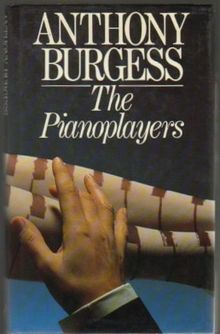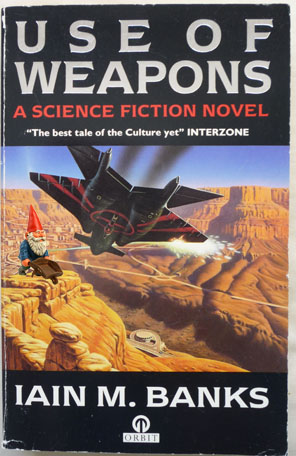This is a summary article of types of writing. It is written by our Fiction tutor, Karena. If you wonder what is the point of trying to write, read on…

Irina Hakamada - getting an award - politician and writer. Image licensed from Dreamstime, do not copy
We are surrounded by writing. Everywhere you look when you go out anywhere there is writing. You hear it on the radio, you hear and see it on television or in movies, and read it in books, magazines, pamphlets, newspapers, flyers, brochures, and all over the Internet.
Anyone become a writer with proper training and practice and guidance, and with the Internet, anyone can become a published writer. The Internet connects us all and allows us to share, but more than this it provides entertainment, information and news.
Somebody has to create all of that. The Internet is a voracious machine, gobbling up content as fast as people can make it. If you can learn you can write. If you can talk you can write. And no matter what you write, there’s a place for it.
See our general Writing Courses list >
So let’s look at all the different kinds of writing.
The first distinction is between fiction and non-fiction.
Fiction simply means that it is not all true. However, fiction is always based in truth or we wouldn’t bother to read it. Believability is a strong concern for fiction writers.
Non-fiction is, by definition, factual.
Between fiction and non-fiction the types of writing that are done today include everything that you see around you: books, magazines, newspapers, movies, television shows, radio shows, comic books, animations, speeches, newspaper reports and articles, reports for industry the government or the people, children’s stories and kinds of content for the Internet.
Fiction
So what about the forms? Fiction has many forms.
Short stories may include postcard fiction, flash fiction or stories for film or plain old short stories for publication, or reading in a writers’ group.
Longer short stories are just called short stories. If it’s longer than a short story but not long enough to be called a novel, it is a novella.
Novels and novellas can be serialized and short stories can be grouped and presented like a serial with each using the same characters and different stories.
Non-fiction
This ranges from little pamphlets and cookbooks, how to brochures and articles for newspapers, magazines, newsletters, encyclopedias, and the Internet. Full-length non-fiction books can be written on literally thousands of topics.
Textbooks are special, since they usually include a number of exercises and assessments.
Coffee-table books are more illustration than text, but the text still has to be written by a writer. Some coffee-table books are the works of one person doing both the illustration and the writing. Usually they are a mix of photography or art, and writing. Layout is very important so a designer is also vital.
Academic writing is a genre all by itself, and includes research papers, theses, and dissertations.
Essays are written by school children of all ages. And also by newspaper and magazine columnists, some of whom are famous, win awards, and get huge fees. Essays can get syndicated and anthologised.
Drama and scripting can include both fiction and dramatised non-fiction.
Anything on television has to have a script. Even talk shows or discussion groups have to have a working script.
Then there are a number of different kinds of entertainment shows that draw on fiction. These include weekly series on crime, action and adventure, humor, serialized drama (soap operas), reality shows, made for television movies, miniseries’, romance, horror, science fiction and fantasy.
All of these are separated according to the audience at which they are aimed.
Television , broadcast or online, also has a great deal of non-fiction that must be scripted. This includes the daily news, documentary shows, self-help and how-to’s, children’s informational shows, nature and science shows and political messages.
Drama also includes skits for presenting live on stage, one-act plays and full-length plays, usually three acts. Two offshoots of these are the musical and Opera.
For the Internet, content ranges from hundred word articles to many-paged documents and books.
In addition, animations, movies, filmed informational shows, podcasts, blogs, informational booklets and ad copy.
It is tempting to include advertising copy (ad copy) as non-fiction, but that’s not always true. Ad copy is special and it has close connections to poetry, another odd kind of writing, because part of the aim for each is the same, to touch on a very deep level not with the words, but with the audience’s reaction to the words.
There are many other names for most of these things I have mentioned and some odd types of each, such as reports may be white papers, which are designed to sell, scientific research reports, or news reports, or any of dozens of other types.
Reports or White Papers are non-fiction, generally designed to inform or provide facts. These must be factual, but they are designed to get people interested in a company or a product.
So not only is the range of writing high, which requires legions of writers to supply it.
When you add the Internet to this mix the demand is far outreaching the supply.
So if you want to write, all you have to do is figure out what you want to write, why, and then get somebody to help you learn to do it.
If you don’t know what you want to write, try starting with what you read. What do you like to read? Maybe that’s what you should write.
This doesn’t mean you’re going to become the next Norman Mailer or Maya Angelou or any of 1000 other great writers, but we don’t spend most of our time reading them.
Think about what you read every day, and most of it is written by people just like you.
See our new courses on the Writing Course with Story Live free site:
Writing Course for Fiction & Narrative > and
Writing Course for Movie & Film Scriptwriting >
Also the general Writing Courses list >
Karena






Crowd fund your new novel or story this way
One of our occasional writers, Ivy Ngeow, also writes fiction. She has been published and won awards. This might smooth your way to a publishing deal, but the new way involves crowdfunding, or rather, pre-selling enough copies of the book (which is completed). It is set in Chicago, USA, and Macau near Hong Kong, China, and is set in the 80s, with Reagan the untried new president, parallels with Trump there.
Check out her entertaining video here on the Unbound site now >
Heart of Glass novel by Ivy Ngeow
Unbound have just had a massive hit with The Good Immigrant, a collection of essays about being an immigrant in the UK. And Robert Llewellyn, an actor from the SF series Red Dwarf, has had many novels out through them.
Ivy will be discussing her crowd funding techniques, using Facebook, blogging, email etc, on this site soon.
I am preparing a pitch video for my next novel now!
Check out Ivy’s new crime novel here on the Unbound site now >